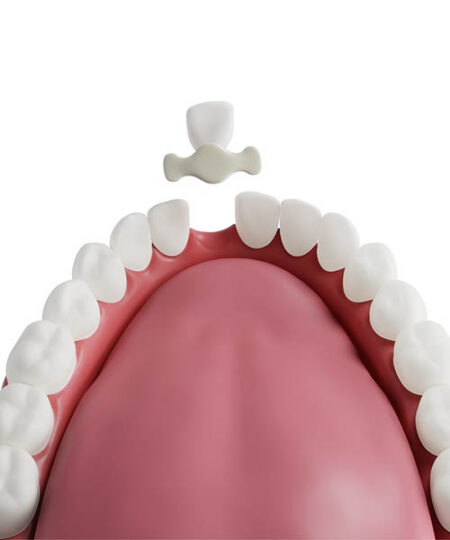Dental Bridges

Do you have a gap from a missing tooth that affects your self-esteem or makes you less confident to smile? Do you have a challenge speaking or eating due to missing teeth? We at Clay dental can replace your missing teeth with a bridge and create a beautiful, confident you.
What Is a Dental Bridge?
A dental bridge is designed to fill in the gap in your smile with a natural-looking tooth replacement. A dental bridge consists of several dental crowns fused together. The middle crown, or pontic is the tooth replacement and fits inside the space from your missing tooth. The other crowns act as anchors and are bonded to your natural teeth on either side of the gap.
FAQ
There are four main types of dental bridges:
- traditional
- cantilever
- Maryland
- implant-supported
Traditional dental bridge
A traditional dental bridge consists of a false tooth or teeth being held in place by dental crowns that have been cemented onto each of the abutment teeth. A traditional bridge is the most popular type of dental bridge and can be used when you have natural teeth on both sides of the gap created by your missing tooth.
Cantilever dental bridge
Although like a traditional bridge, the pontic in a cantilever dental bridge is held in place by dental crown that is cemented to only one abutment tooth. For a cantilever bridge, you only need one natural tooth next to the missing tooth gap.
Maryland dental bridge
Like a traditional bridge, Maryland dental bridges employ two natural abutment teeth, one on each side of the gap. However, while a traditional bridge uses dental crowns on the abutment teeth, a Maryland bridge uses a framework of either metal or porcelain that is bonded onto the backs of the abutment teeth.
Like a traditional bridge, a Maryland bridge can only be used when you have a natural tooth on each side of the gap caused by the missing tooth or teeth.
Implant-supported dental bridge
As the name implies, implant-supported bridges use dental implants as opposed to crowns or frameworks. Typically, one implant is surgically placed for every missing tooth, and these implants hold the bridge in position. If one implant for each missing tooth isn’t possible, the bridge may have a pontic suspended between two implant-supported crowns.
Considered the strongest and most stable system, an implant-supported bridge commonly requires two surgeries:
- one to embed the implants in the jawbone
- a second surgery to place the bridge
It can take several months for the procedure to be finished.
Many dental insurance plans cover bridges, and many now cover implants as well. A dental bridge may need to be replaced every 5 to 15 years, depending on proper care, while implants are considered a permanent solution. There are factors that can reduce the life of all types of bridges, including implants, such as dental hygiene.

